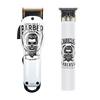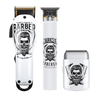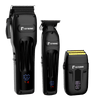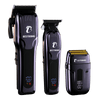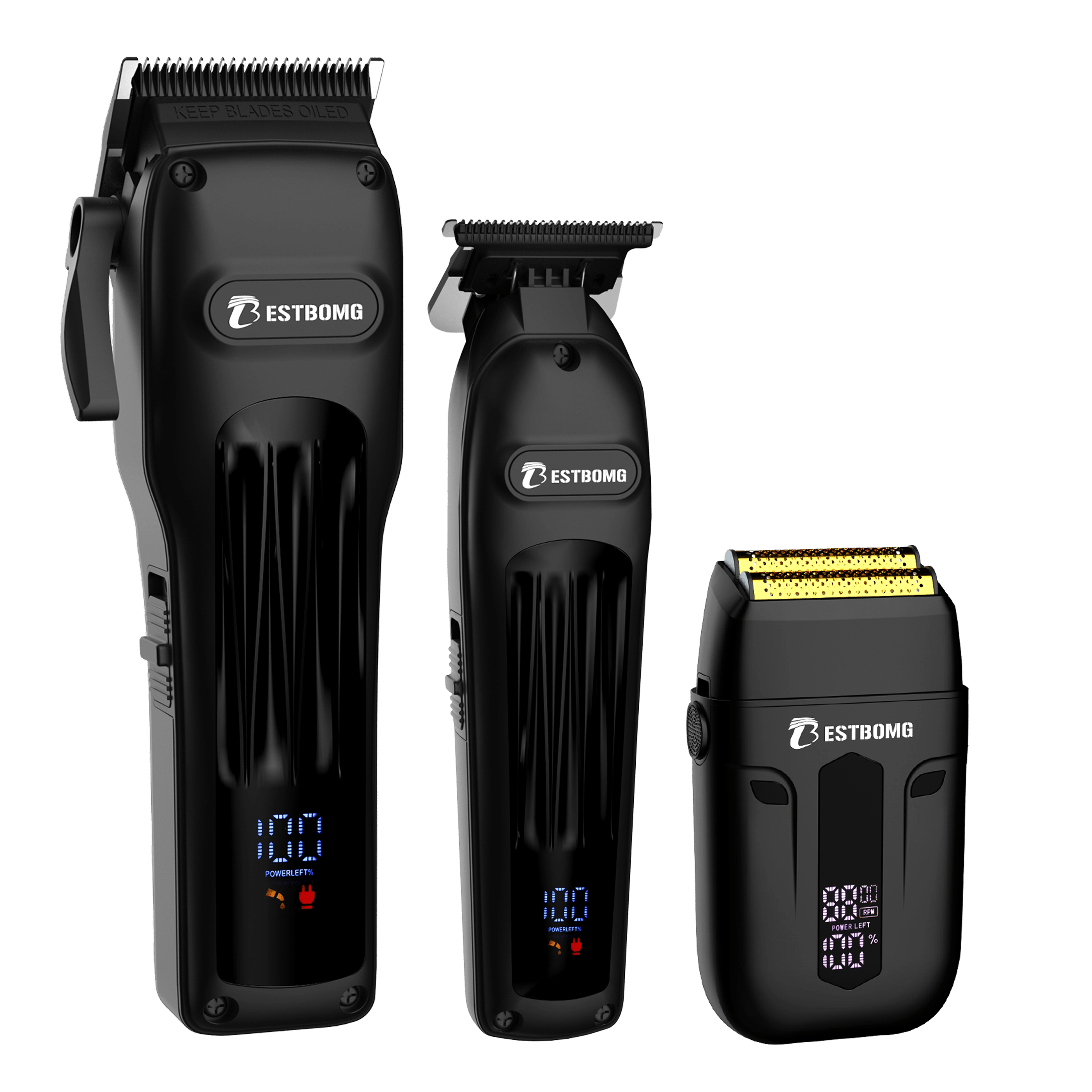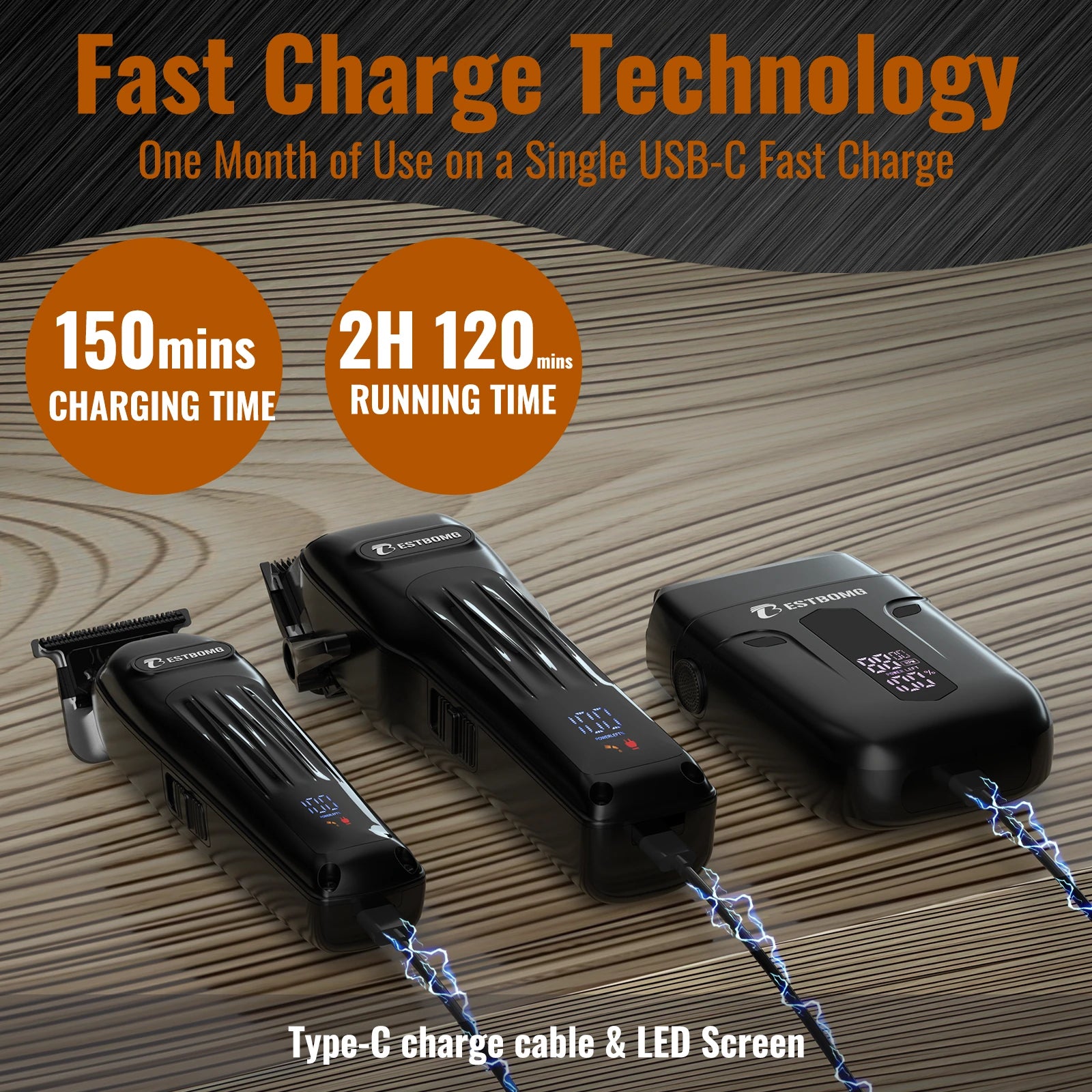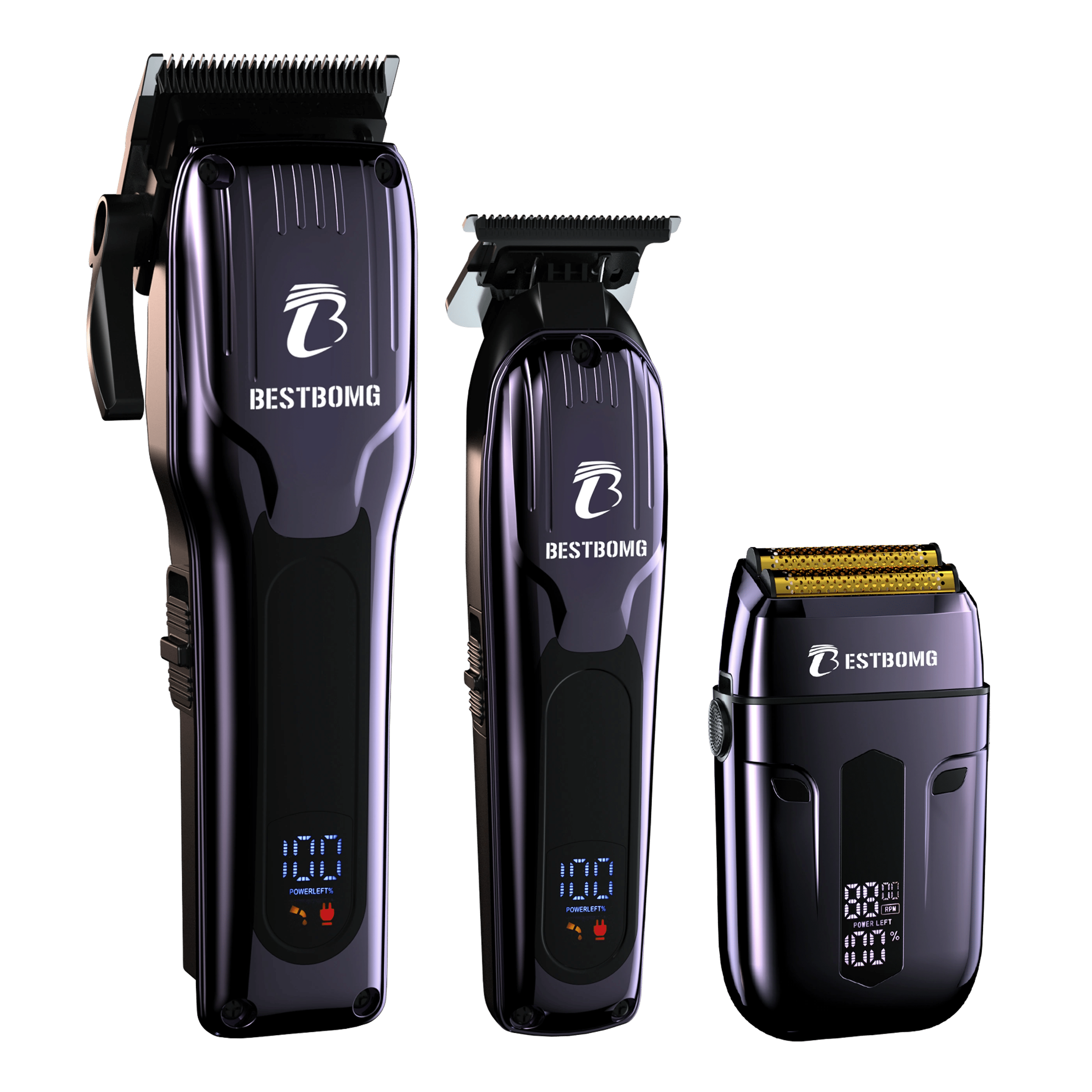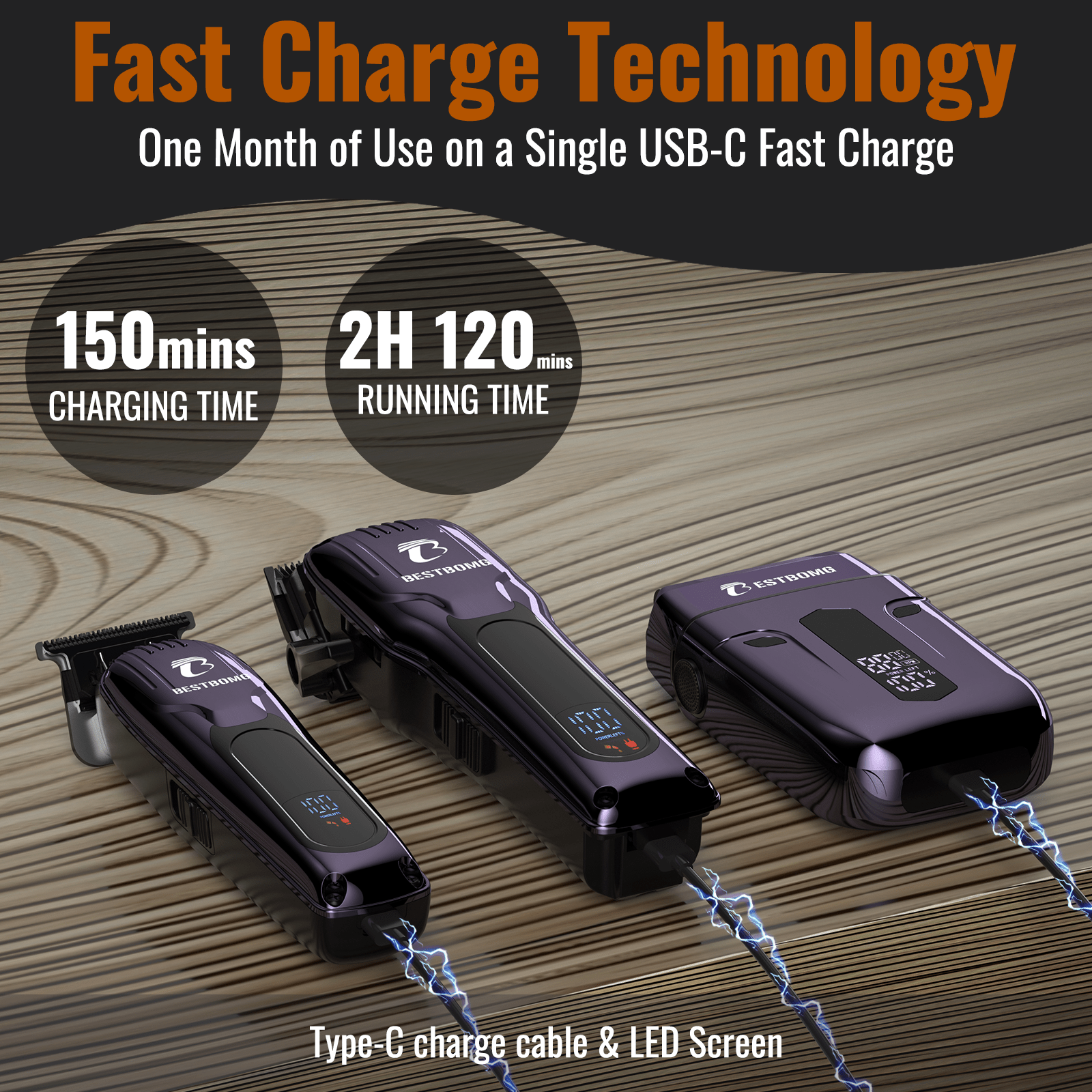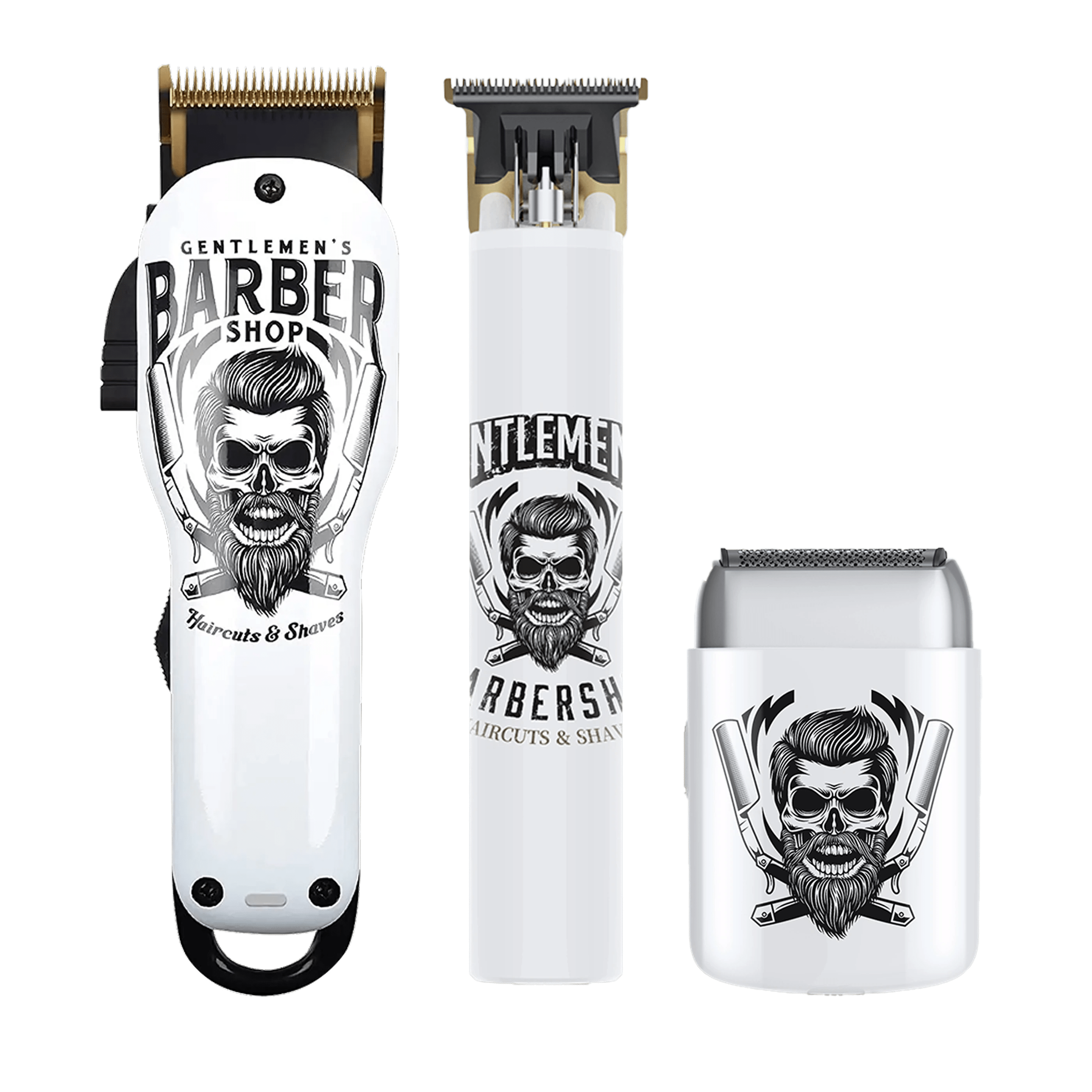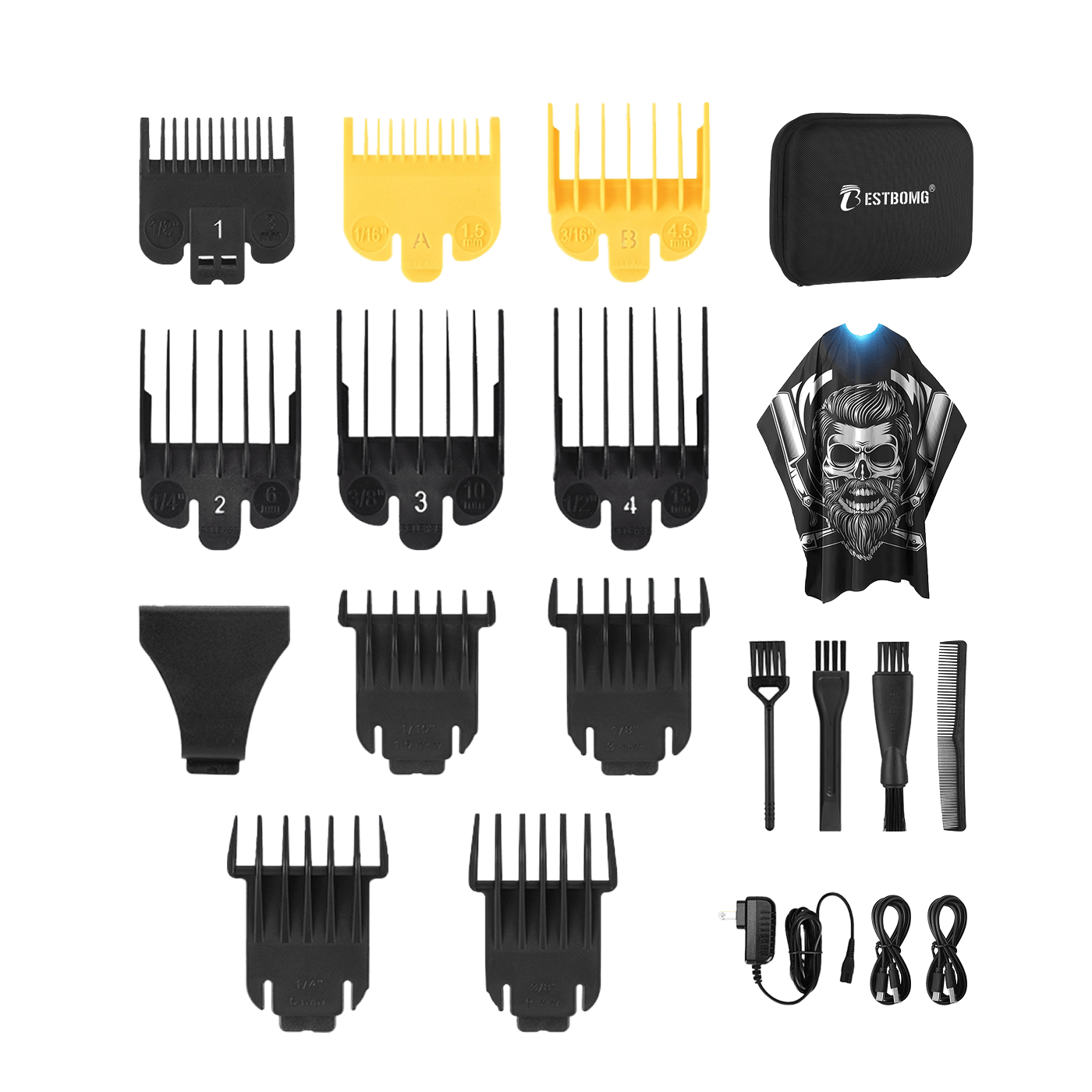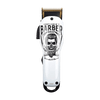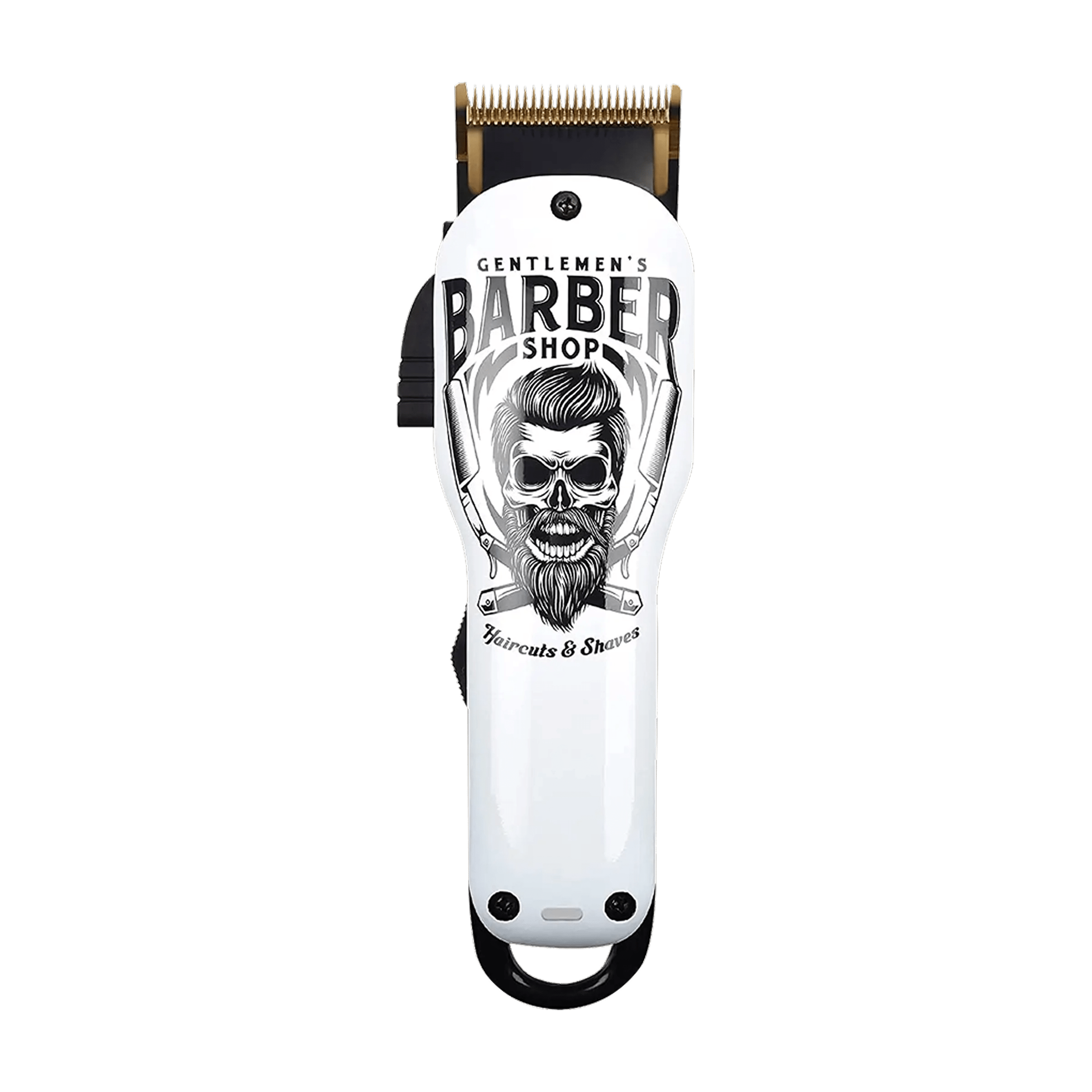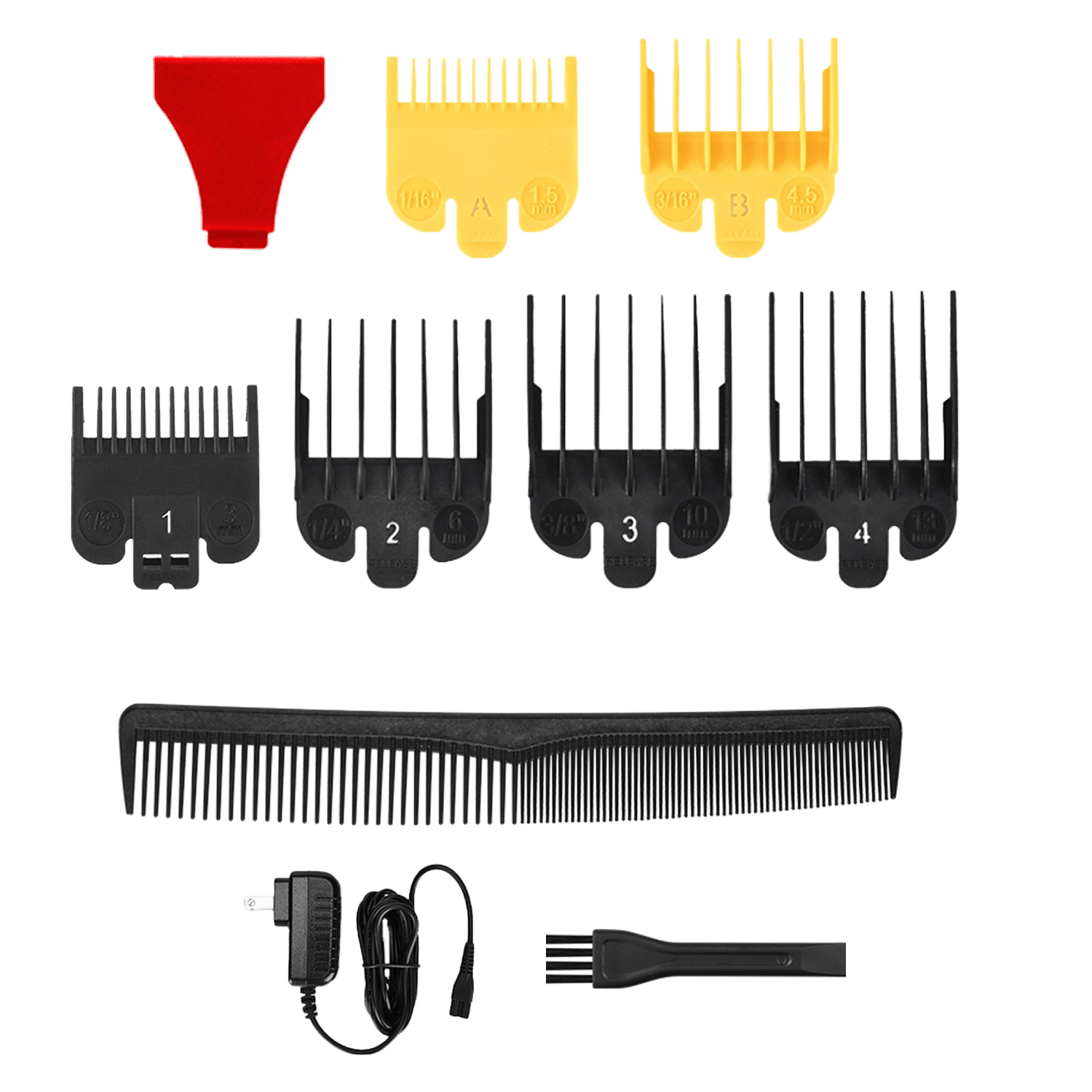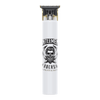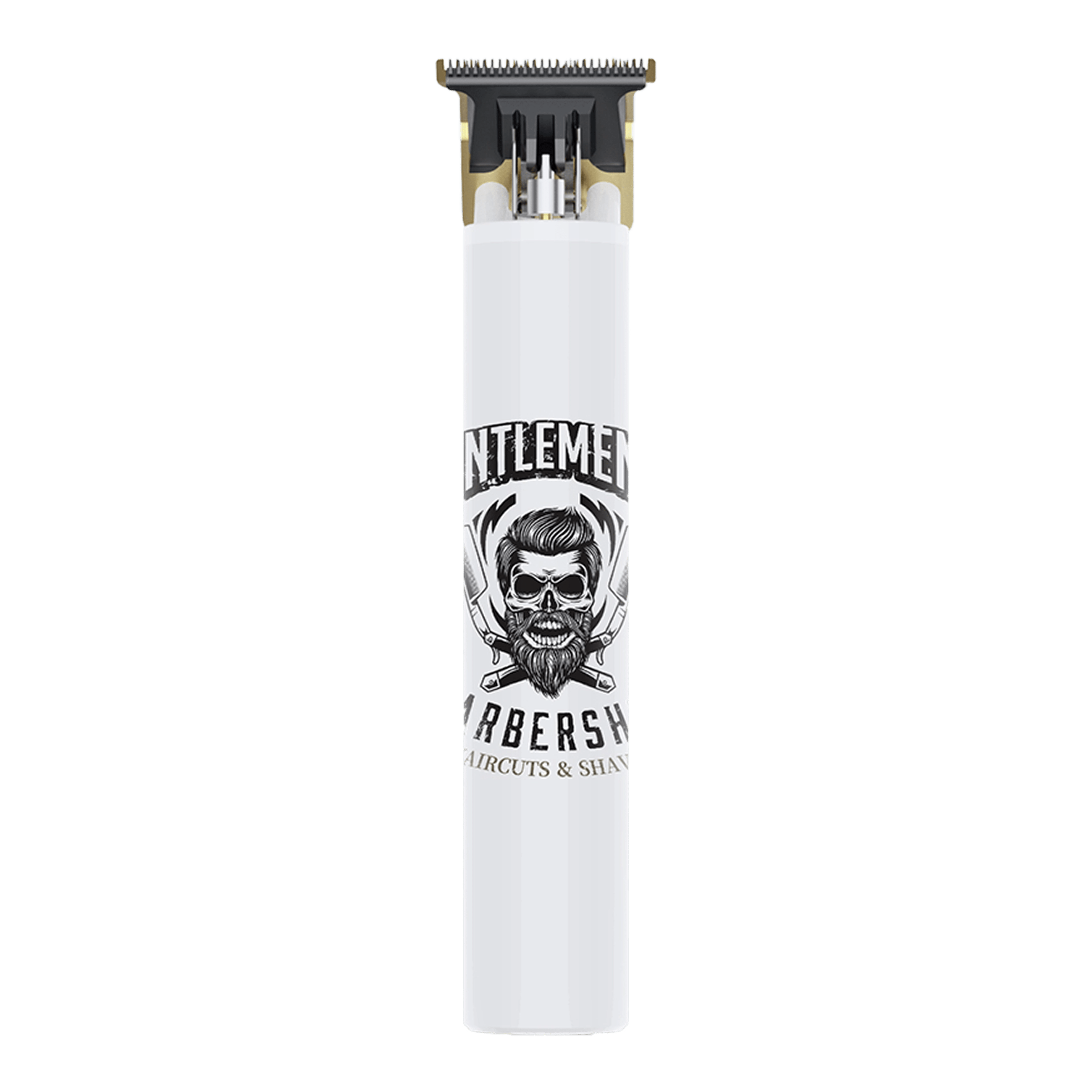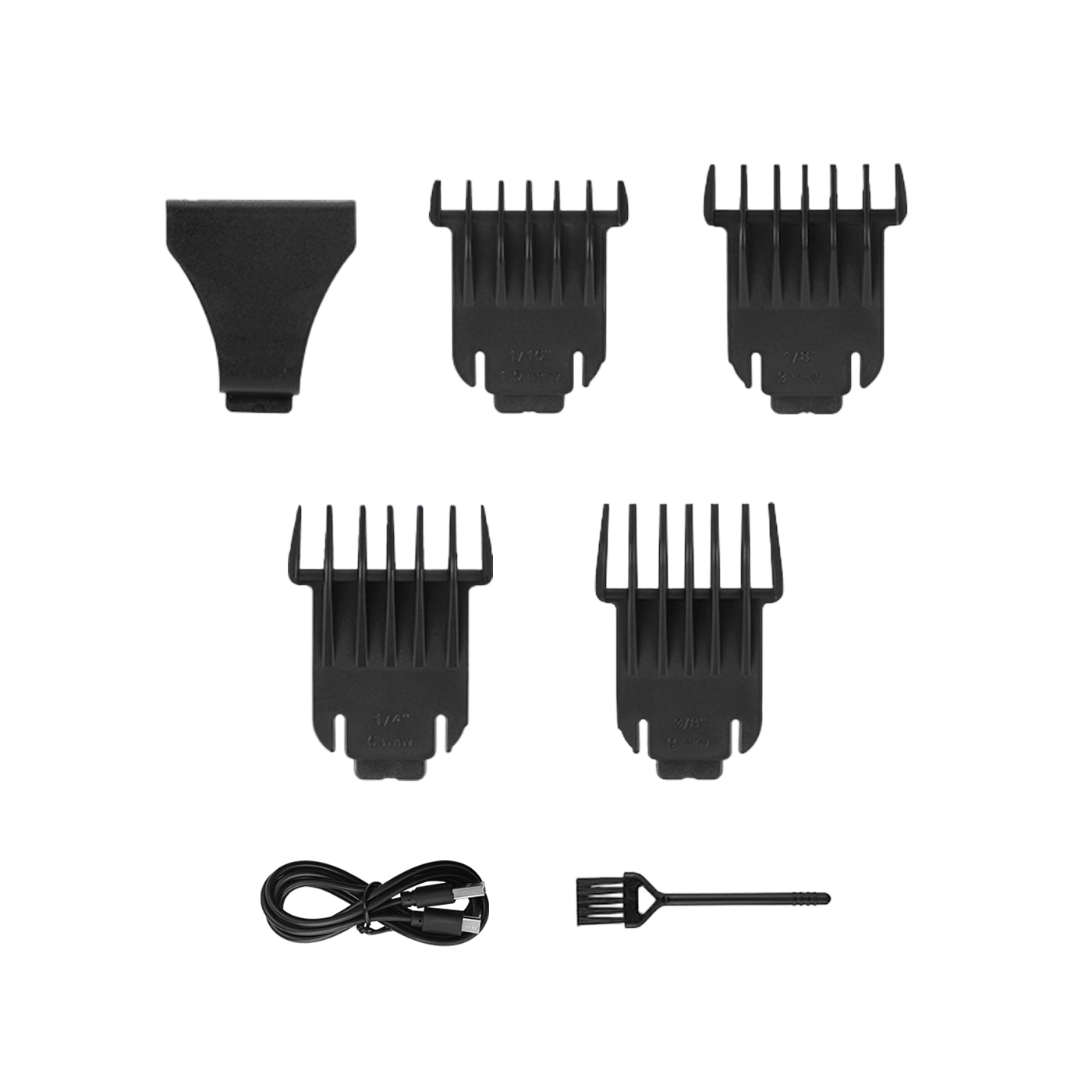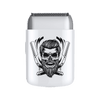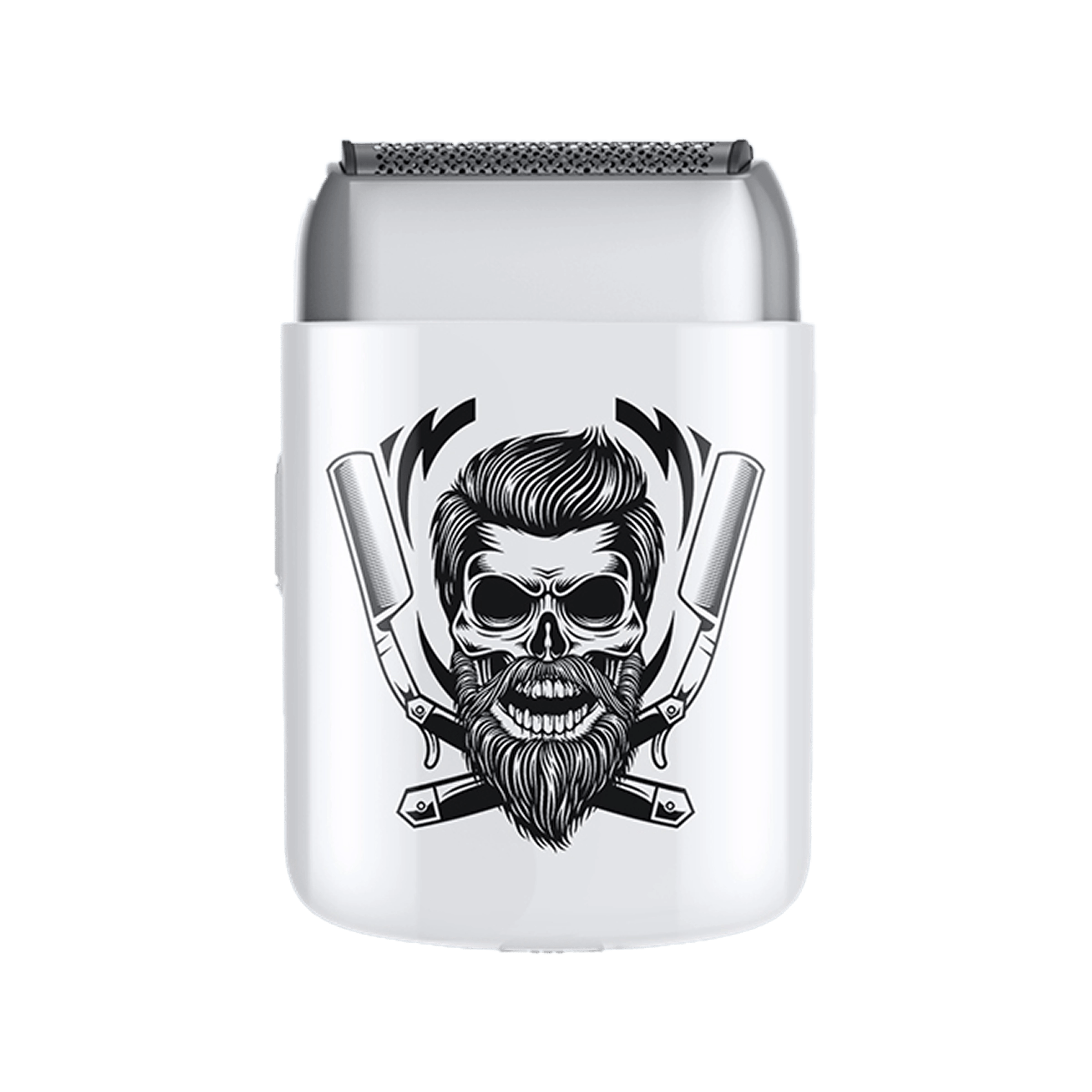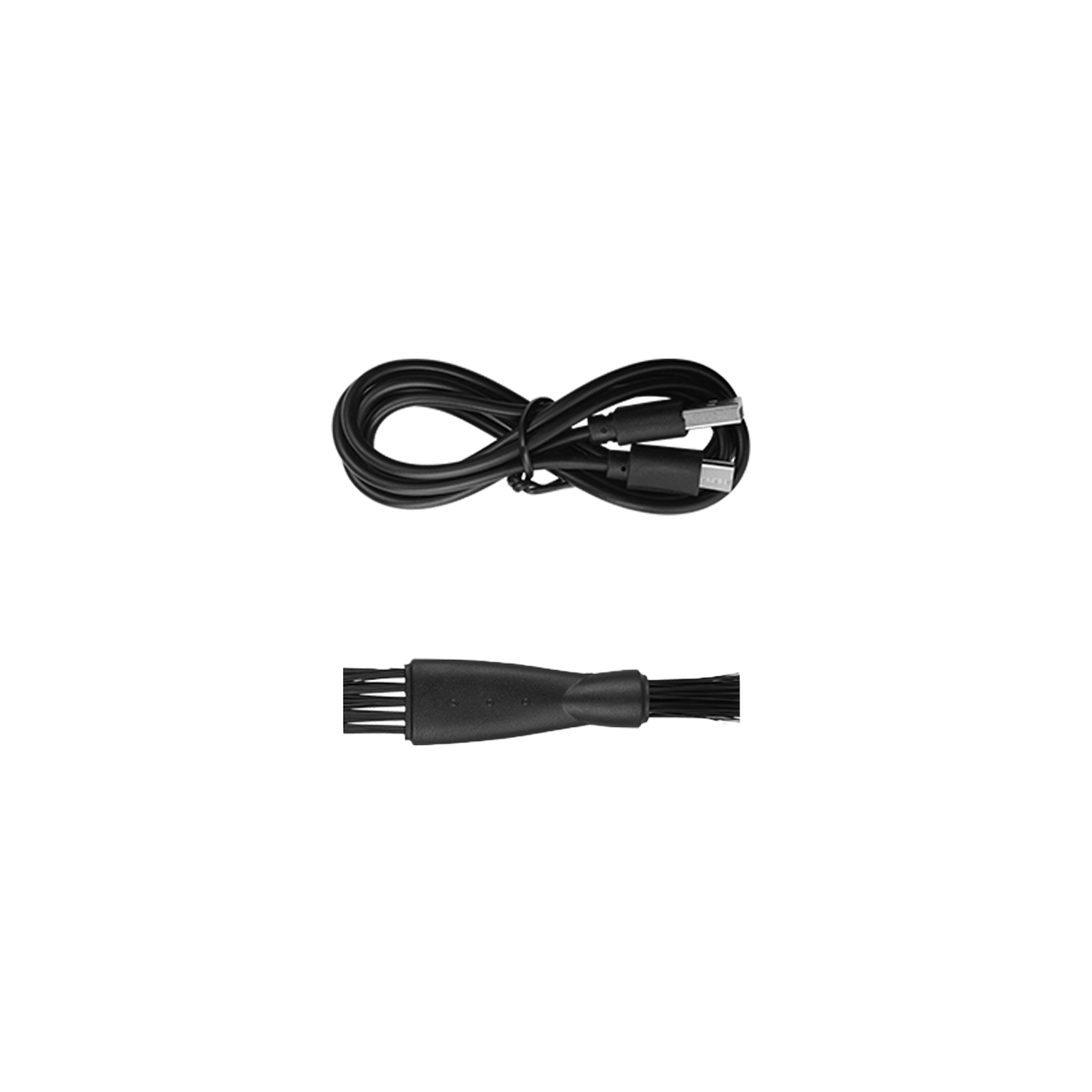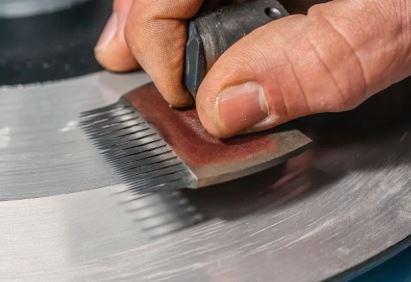Yes, you can sharpen hair clippers at home with basic tools. You don't need expensive equipment—just sandpaper, a flat surface, and about 15 minutes. Sharp blades cut cleanly without pulling. Dull blades tug on hair and leave uneven lines. This guide shows you three easy methods to restore your clipper blades.
Why Your Clipper Blades Get Dull
Blades don't stay sharp forever. Here's what causes them to lose their edge.
What makes blades dull:
- Hair and skin oils build up on the cutting edge
- No oil between uses creates friction and heat damage
- Normal wear from cutting hundreds of heads of hair
- Dropping the clippers can knock blades out of alignment
- Dirt and product residue act like sandpaper on the metal
Even expensive clippers get dull. The good news? Most dull blades can be fixed, not replaced.
Understanding how clipper blade mechanisms work shows you why keeping them clean and sharp matters for good haircuts.

What You Can Use to Sharpen Clippers
You have several options. Pick what fits your budget and how often you cut hair.
Sandpaper (easiest method):
- Just need 150-grit and 220-grit sandpaper
- Costs under $5 at any hardware store
- Works on all blade types
- Takes about 15 minutes
- Best for people who cut hair at home
Sharpening stones:
- Gives you more control than sandpaper
- Must use hard stones (soft ones wear down too fast)
- Good options: diamond plates, glass stones, ceramic stones
- Takes practice to get the angle right
- Best for barbers who sharpen weekly
Electric sharpener:
- Fastest method with built-in angle guides
- Costs more upfront but saves time
- Hard to mess up the angle
- Best for busy barbershops
Honing rod:
- Keeps a sharp blade sharp longer
- Can't fix really dull blades
- Use between full sharpenings
Quality professional-grade hair clippers for home use let you swap blade sets easily so you always have sharp ones ready.

How to Sharpen Clipper Blades with Sandpaper
This is the simplest method that works surprisingly well for most home users and even professionals.
What you need:
- 150-grit sandpaper
- 220-grit sandpaper
- Flat, level surface
- Tape to secure sandpaper
- Magnet (optional, acts as a handle)
- Clipper cleaning oil or blade wash
Step-by-step process:
- Set up your workspace: Place 150-grit sandpaper at the front and 220-grit at the back on a completely flat surface. Tape them down securely.
- Remove and clean blades: Power off clippers and remove blades. Brush out all hair and debris.
- Attach to magnet: This acts as a handle to prevent cutting yourself and helps maintain consistent pressure.
- Sharpen on 150-grit: Place blade flat on sandpaper. Apply 3-5 pounds of pressure and pull back in an even, clean stroke. Keep the blade completely flat—no shaking or twisting. Perform 10 strokes.
- Buff on 220-grit: Move to finer sandpaper and perform 20 strokes using the same unidirectional motion.
- Inspect the edge: Blades should have a clean, shiny appearance after proper sharpening.
The key is maintaining a flat contact surface throughout. Any rocking motion removes material unevenly and ruins the blade geometry.
How to Sharpen Clipper Blades with Stones
Stones give you more control but need the right technique. This method works better for people who sharpen often.
Pick the right stones: Hard stones work best. Soft stones wear down and create waves instead of staying flat. Good choices are diamond plates, glass stones, or ceramic stones.
How to do it:
- Take off the blades and clean them well
- Make sure your stone is flat (check it on a level surface)
- Hold the blade at a slight angle with light pressure
- Pull the blade backward across the stone (don't push forward)
- Do both the top blade and the bottom blade
- Brush away the metal dust
What not to do:
- Don't use soft stones—they wear down too fast
- Don't press hard—light pressure works better
- Don't change your angle between strokes
- Don't push and pull—only pull backward
Think of it like sanding a piece of wood. If you push and pull, one side wears more than the other. You want both sides even.
If you're not getting good results, pros can sharpen them for you. Quality clipper sets with maintenance accessories include cleaning brushes and storage cases to protect your investment.
How to Sharpen Clipper Blades with an Electric Sharpener
Electric sharpeners take the guesswork out of angle control and speed up the process significantly.
The process:
- Remove and clean blades so you're sharpening clean metal, not buildup
- Set up the sharpener per manufacturer's instructions (check disc condition, guides, lubrication)
- Seat the blade correctly in the guides
- Run the cycle and let the machine maintain the proper angle
- Inspect results; repeat lightly if needed rather than forcing one long pass
- Clean, oil, and test on hair (never test sharpness with your finger)
Electric sharpeners work well for barbershops that need to sharpen multiple blade sets weekly. The consistent angle and speed make results more predictable than hand methods.
Clean Off All the Grit (Very Important!)
This step stops your blades from getting dull again right away. Most people skip this and wonder why their blades don't work.
Why you must clean: The sandpaper and stones leave metal dust and grit all over your blades. If you don't clean it off, this grit acts like tiny sandpaper particles. It wears down your fresh edge in just a few haircuts.
How to clean properly:
- Spray the blade with clipper oil or blade cleaner
- Scrub with a brush to get all the grit off
- Spray again and let it drip
- Wipe everything dry with a soft cloth
- Make sure no grit or oil is left
This cleaning brings dull blades back to life by removing all the junk that causes friction.
How to Oil Your Blades After Sharpening
Oil protects your fresh edge and makes the blades run smoothly. Here's the right way to do it.
The correct way to oil:
- Put the blades back on your clippers
- Turn the clippers on
- Point the blade down (so oil doesn't drip into the motor)
- Put 2-3 drops across the teeth
- Put 1 drop at each end
- Let it run for 10 seconds
- Wipe off extra oil
Most clipper brands tell you to oil this exact way. Check your manual—some models are different.
Test your blades: Try them on hair, not your finger. Cut a small section. If it pulls or tugs, the blades might not be lined up right.
Learning basic clipper care and maintenance tips helps your tools last longer between sharpenings.
How Often to Sharpen Your Clipper Blades
How often depends on how much you use your clippers and how well you take care of them.
If you cut hair at home: Sharpen every 3-4 months if you cut once a week. Oil your blades every time and they'll last longer.
If you're a barber: Sharpen every 2-3 weeks. Some busy shops sharpen every week. High-quality tools from Bestbomg's professional grooming tools are built to handle frequent sharpening.
Signs you need to sharpen:
- Clipper pulls hair instead of cutting
- You see lines in the haircut
- Blades get too hot during normal use
- Clipper sounds louder than usual
- Need to go over the same spot many times
Oil your blades before and after every haircut. This is the #1 thing that keeps blades sharp longer.
Taking Care of Blades Between Sharpenings
Good habits keep your blades sharp much longer. These simple steps make a big difference.
After every haircut:
- Brush out all the hair
- Clean with blade wash if needed
- Dry the blades completely
- Oil them the right way (shown above)
- Store somewhere dry
Once a week:
- Take blades off and soak in cleaning solution
- Scrub with a brush
- Dry really well and put back together
- Check that blades line up right
Once a month:
- Look for chips, cracks, or damage
- Make sure the moving blade doesn't stick out past the fixed blade
- Keep extra blades so you can swap when one gets hot
Good tools from Bestbomg's online clipper store are designed to be easy to maintain and last a long time with basic care.
When to Replace vs. Sharpen Clipper Blades
Not all dull blades should be sharpened. Sometimes replacement is the better option.
Sharpen when:
- Blades are dull from normal use but structurally sound
- No visible chips, cracks, or deep gouges
- Proper alignment can be maintained
- You've had success sharpening them before
Replace when:
- Visible chips or cracks in the cutting edge
- Severe rust or corrosion
- Warping or bent teeth
- Blades won't hold an edge even after proper sharpening
- Cost of professional sharpening approaches the replacement cost
For most quality clippers, blades can be sharpened 3-5 times before needing replacement. Cheap blades may not be worth sharpening and should simply be replaced.
Frequently Asked Questions
How do I sharpen my hair clippers?
Take off the blades and clean them. Use 150-grit sandpaper with 10 back-strokes, then 220-grit with 20 strokes. Keep the blade flat—don't twist it. You can also use hard stones or an electric sharpener. After sharpening, clean off all the metal dust with blade cleaner. Then oil the blades before putting them back on.
Can Wahl clipper blades be sharpened?
Yes, Wahl blades sharpen the same way as other brands. The sandpaper method works great for Wahl. You can also send them to a professional. Just remember to oil your Wahl blades before and after every use—this keeps them sharp longer and you won't need to sharpen as often.
How much does it cost to have clipper blades sharpened?
Pros charge $15-30 per blade set. You might pay a bit more if the blades are really beat up. Mail-in services cost about the same plus shipping. DIY sharpening with sandpaper costs under $5 and works great once you practice a few times.
Can I damage clippers by sharpening too much?
Yes. Every time you sharpen, you remove a thin layer of metal. You can only sharpen the same blades 3-5 times before they get too thin. Don't press too hard when sharpening. Only sharpen when blades actually feel dull—usually every few months for home use.
Why won't my clipper blades cut after sharpening?
Usually it's leftover grit from the sandpaper (clean with blade wash), or the blades aren't lined up right (the moving blade should match the fixed blade, not stick out past it). Also make sure you oiled them. If you rocked the blade while sharpening, the edge won't be even.
Can I sharpen my clipper blades with sandpaper?
Yes. Sandpaper is one of the best ways to sharpen clippers. Use 150-grit then 220-grit on a flat surface. The secret is keeping the blade flat with even pressure. Only pull backward—don't push. Clean off all the grit dust afterward. This method works for all blade types and costs almost nothing.
Keep your grooming tools cutting like new with simple regular care. Shop quality clippers and maintenance supplies at Bestbomg for professional haircuts at home.
Read more
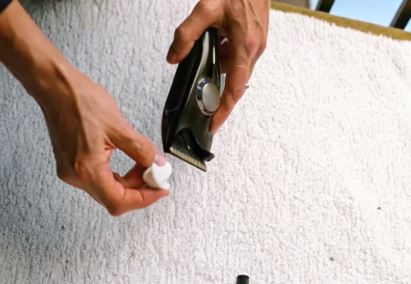
What is the Lever for on Hair Clippers: Complete Guide
The lever on hair clippers is a taper lever that adjusts the cutting length between guide comb sizes. Moving the lever up gives you the shortest cut, while moving it down gives you a longer cut. Th...
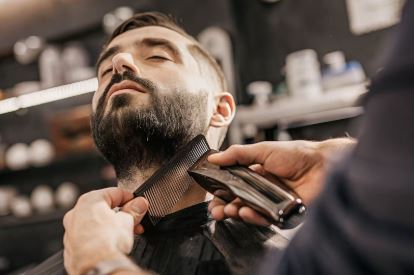
How Long Do Hair Clippers Last? Complete Lifespan Guide
Hair clippers can last anywhere from 5 to 20+ years, depending on quality, usage, and maintenance. Professional-grade clippers with proper care often last 10-15 years, while budget models may only ...
